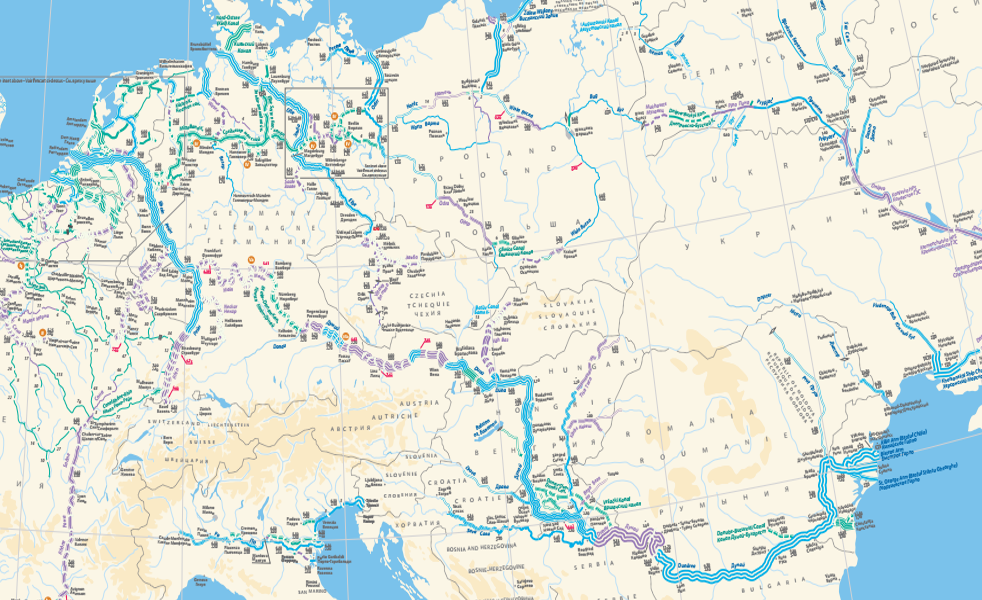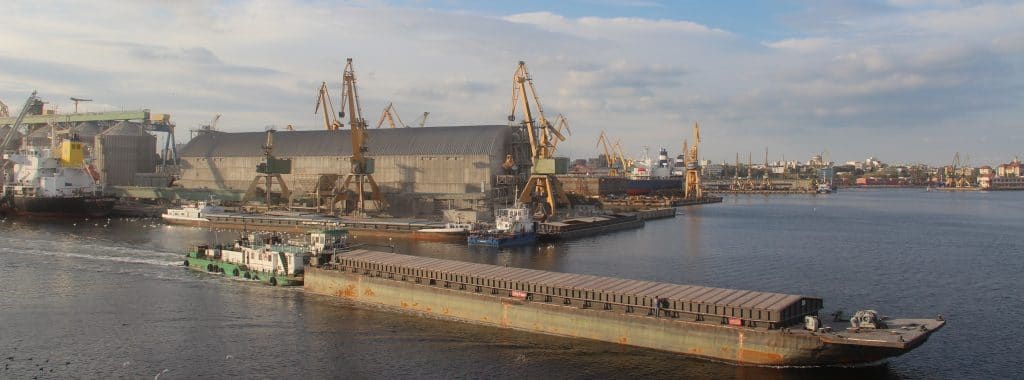River transport by barges on Danube – Rhein – Maine is one of the most important segment of water transport nowadays in Europe.
The connection of the Constanta Port with the Danube River is made through the Danube-Black Sea Canal, which represents one of the main strengths of port.
Important cargo quantities are carried on Danube River, between Constanta and Central and Eastern European countries (Bulgaria, Serbia, Hungary, Austria, Slovakia, Germany, Netherlands and Belgium).
As a charterer/broker based in Romania we have very good relationships with many local river-barge owners and also with foreign barge owners.
Main cargoes moved by barges on Danube are:
* fertilizers;
* grains;
* steel products;
* projects & heavy lifts equipments;
* construction materials;
Most of the tonnage chartered is represented by self-propelled river barges from 1000 dwt up tp 5000 dwt , but also convoys of 4-6 barges.
Using Rhine-Maine-Danube-Black Sea Canal, cargoes from Central Europe/North Europe can be moved to Caspian Sea being transshipped at Constanta Port.
Links:
R.A. Administratia Fluviala a Dunarii de Jos Galati (afdj.ro)
CN APDM SA – Administratiei Porturilor Dunarii Maritime (apdmgalati.ro)
River transport on Danube, subject to type of cargoes carried, is dividing barges in following classification:
- Dry cargo barges are utilized to convey a wide range of commodities, including log timber, steel coils, grain, and ore. These barges are versatile and can consequently reduce the amount of empty runs (journeys with no return cargo). This category of barges can typically transport between 1000 tons and 2000 tons of cargo and is frequently employed on the Danube in linked formations or pushed-coupled convoys.
- Tanker or tank barges transport on Danube-Rhein-Maine a variety of liquid commodities, including mineral oil and its derivatives (petrol, diesel, heating oil), chemical products (acids, bases, benzene, styrene, methanol), and liquid gas. The majority of the above-mentioned liquid items are hazardous materials that must be transported utilizing specialized tanker vessel units equipped with the necessary safety gear. In this regard, European regulations and guidelines, such as the ADN and ADN-D, as well as national laws controlling the transport of dangerous commodities, are of particular importance. The typical capacity of tanker barges operated on the Danube is roughly 2,000 tons. As is the case with the transportation of dry cargoes, liquid commodities on the Danube are primarily transported by pushed convoys. The double hull of contemporary tankers avoids cargo leakage in the event that the outer hull is compromised. In order to avoid the cargo from interacting with the tank’s surface, stainless steel tanks or cargo holds with a specific coating are utilized. The installation of heaters and valves enables the delivery of items that are susceptible to freezing, even during the winter, while sprinkler systems on deck protect the tanks from the summer heat. Most tanker barges self-propelled are fitted with pumps that can load and unload cargo directly into their tanks in ports without specific loading equipment.
International Safety Guide for Inland Navigation Tank-Barges and Terminals (ISGINTT)
- Container barges are vessels designed exclusively for transporting containers and are largely employed in the Rhine region at present. In the vicinity of the Danube, container convoys with four pushed lighters are regarded as the most effective means of increasing capacity.
- RORO barges indicates that the products being transported can be loaded and unloaded via port or vessel ramps utilizing their own motive power. Passenger cars, construction and agricultural machinery, articulated vehicles and semi-trailers (“floating road”), as well as large cargo and big items, are the most important types of goods delivered in this manner.

